Best hikes near me: Unveiling the hidden gems and scenic trails awaiting your exploration. This guide delves into the crucial factors for finding the perfect hike, from defining your ideal distance to considering the trail’s difficulty and breathtaking views. We’ll equip you with the knowledge to confidently choose the best hikes near your location, tailored to your preferences.
Navigating the vast landscape of outdoor adventures can be overwhelming. This comprehensive resource provides a structured approach to discovering the ideal trails. By considering factors like distance, terrain, and user reviews, you can confidently plan your next outdoor excursion. The insights shared here will help you select the perfect hike, from leisurely strolls to challenging climbs.
Defining “Near Me”
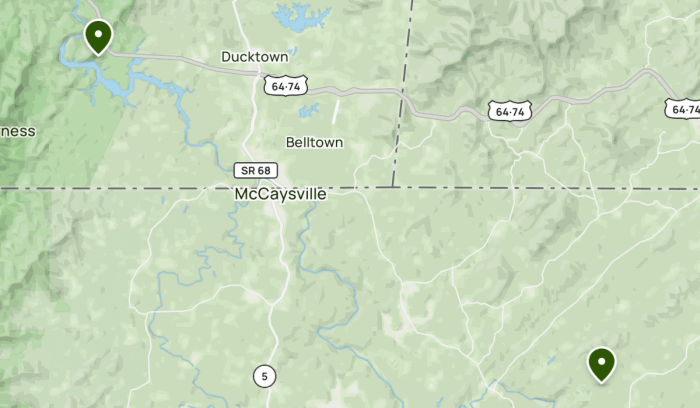
Source: alltrails.com
Locating the best hikes near you is a crucial aspect of outdoor recreation. This process often hinges on the precise definition of “near me.” A nuanced understanding of distance and location data is essential for generating relevant and useful results.Determining the ideal search radius is crucial for tailoring recommendations to individual needs. A user seeking a quick, accessible trail may have different preferences than someone seeking a challenging multi-day expedition.
This section delves into strategies for defining “near me” to optimize your search experience.
Defining Search Radius
Understanding the implications of varying search distances is essential for achieving the desired outcome. A broader search area might uncover a wider variety of options, while a narrower one focuses on immediate accessibility. This section Artikels different distance ranges and their implications.
- A 10-mile radius is ideal for quick escapes and easily accessible trails. This range often suits those seeking a relatively short hike with limited travel time.
- A 25-mile radius offers a wider array of options while still maintaining a manageable travel time. This is suitable for those who are willing to dedicate more time to the journey, potentially exploring more challenging or scenic trails.
- A 50-mile radius expands the search significantly, allowing access to a larger selection of trails and potentially more diverse landscapes. This is a good choice for those with more flexible schedules and a desire to venture further afield.
Adjusting Search Radius
The effectiveness of your search results hinges on accurately tailoring the search radius to your needs. Consider factors like travel time, the level of exertion you’re seeking, and the type of landscape you prefer.
- Users can refine their search by adjusting the radius based on their personal preferences and travel constraints. For instance, someone with limited time might opt for a smaller radius, while someone with more time available might choose a larger one.
- The search radius can be dynamically adjusted to prioritize various factors, such as proximity to urban centers, specific natural features, or the presence of certain amenities like parking or restrooms.
- By factoring in travel time, the user can more accurately determine the best hike given their available time.
Incorporating User Location Data
Accurate location data is crucial for generating precise recommendations. Integrating GPS coordinates or location services allows for a highly personalized and effective search.
Finding the best hikes near you often involves exploring various options, including day hiking trails near me. Day hiking trails near me offer a fantastic starting point for discovering hidden gems and scenic routes. Ultimately, the best hikes near you will depend on your preferences and available time, but exploring these options can help you find the perfect outdoor adventure.
- The user’s current location is essential for providing the most relevant hiking recommendations. By employing this data, the search algorithm can pinpoint trails within the desired radius and avoid showing results outside the user’s geographical area.
- Sophisticated location-based services, such as GPS or device-specific location data, can significantly enhance the accuracy of the search results. These services are vital in providing the most relevant recommendations.
Distance Criteria Comparison
The table below provides a comparative analysis of different distance criteria, highlighting their strengths and weaknesses.
Finding the best hikes near you often involves exploring nature hiking trails near me. For a curated list of scenic routes and local gems, check out this comprehensive guide on nature hiking trails near me. Ultimately, the best hikes near me are the ones that offer a satisfying blend of challenging terrain and breathtaking views.
| Distance | Pros | Cons |
|---|---|---|
| 10 miles | Quick access, limited travel time, suitable for short hikes. | Limited trail variety, potentially fewer challenging options. |
| 25 miles | Wider selection, manageable travel time, suitable for longer hikes and varied terrain. | Slightly longer travel time compared to 10 miles. |
| 50 miles | Vast selection, diverse landscapes, potential for challenging hikes. | Significantly longer travel time, may require significant planning and potentially longer days for hiking. |
Types of Hikes
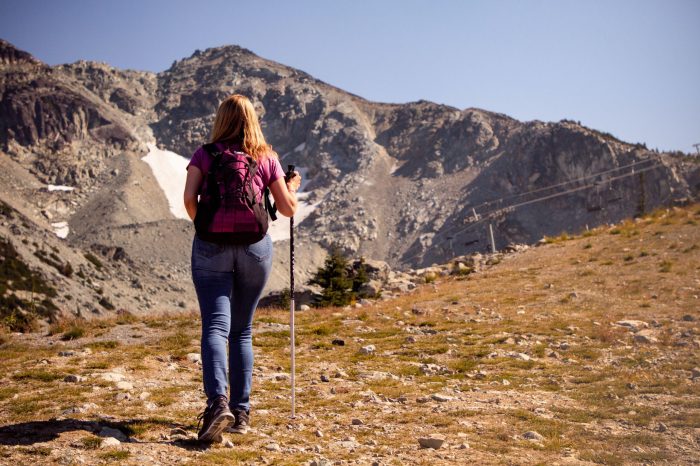
Source: bestmountainbikesdirect.com
Understanding the different types of hikes is crucial for selecting a suitable adventure. This knowledge allows individuals to choose a trek aligned with their physical capabilities and desired experience, ensuring a safe and enjoyable outing. Proper preparation, based on the hike’s nature, is key to success.Different hiking trails cater to various preferences and fitness levels. Whether seeking a leisurely stroll through scenic landscapes or a challenging ascent to a summit, hikers can find trails that meet their specific needs.
This section delves into the diverse categories of hikes, outlining their characteristics and providing examples.
Easy Hikes
Easy hikes are designed for beginners and families. These trails typically have gentle inclines, well-maintained paths, and minimal elevation gain. They provide a fantastic introduction to the joys of hiking while allowing enjoyment of the natural beauty. A perfect example is a riverside trail with paved sections, offering a relaxed experience. Key features include short distances, minimal elevation change, and well-marked routes.
Such trails are ideal for those new to hiking or those with mobility limitations. These are excellent choices for building confidence and enjoying nature’s splendor without undue exertion.
Moderate Hikes
Moderate hikes present a step up in difficulty compared to easy trails. These trails often involve moderate inclines, uneven terrain, and some elevation gain. They are suitable for hikers with a moderate level of fitness and experience. An example is a trail with gradual ascents and descents through a wooded area, with some rocky sections. Key characteristics include moderate distances, a mix of flat and uphill sections, and well-maintained, albeit not always paved, paths.
Moderate hikes are a good option for those seeking a challenging but manageable experience, allowing for enjoyment of nature’s beauty without undue stress.
Challenging Hikes
Challenging hikes demand a higher level of fitness and experience. These trails often involve steep inclines, significant elevation gain, rocky terrain, and potentially exposed sections. A prime example is a mountain trail with steep ascents, rocky scree slopes, and potentially challenging navigation. Key features include longer distances, substantial elevation change, and potentially challenging terrain. These trails are best suited for experienced hikers accustomed to demanding physical exertion.
Preparation, including appropriate gear and physical training, is paramount.
Discovering the best hikes near me often involves understanding the nuances of hiking. This activity, as defined in the Hiking Definition , encompasses a broad range of outdoor excursions, from leisurely strolls to challenging ascents. Ultimately, choosing the perfect local hike depends on your desired level of exertion and the surrounding terrain.
Scenic Hikes
Scenic hikes prioritize breathtaking views and natural beauty. These trails may involve varying degrees of difficulty, but the stunning vistas are a primary attraction. An example could be a trail winding through a canyon with panoramic vistas of the surrounding mountains, offering unique perspectives. Key features include exceptional natural beauty, varied landscapes, and often well-maintained trails. These trails are suitable for hikers who value visual rewards and immersive experiences, irrespective of their fitness level, though the specific difficulty may vary.
Exploring the best hikes near you is a rewarding experience, but don’t overlook the equally captivating scenic walks near me. These often provide a more relaxed pace and allow for deeper appreciation of the local landscape. For detailed recommendations on scenic walks near me, check out this resource: scenic walks near me. Ultimately, whether you prefer challenging climbs or leisurely strolls, the best hikes near you offer a fantastic way to connect with nature.
Historical Hikes
Historical hikes often traverse trails with historical significance, offering a glimpse into the past. These trails might include remnants of past settlements, battlefields, or significant landmarks. An example could be a trail that follows an old mining route, showcasing the remnants of historical mining operations and the landscape’s transformation over time. Key features include historical context, potential for exploration, and potentially varying levels of difficulty depending on the specific trail.
These trails are ideal for hikers interested in history and exploring locations with significant cultural or historical value.
Factors Affecting Perceived Difficulty
Several factors influence the perceived difficulty of a hike, beyond the objective elevation gain or distance. These include weather conditions, the terrain’s composition, the trail’s maintenance, and the hiker’s physical condition. For instance, a relatively easy trail can become challenging in inclement weather, while a challenging trail may feel manageable on a clear, sunny day. The presence of loose rocks, steep drop-offs, or overgrown vegetation can all significantly impact the difficulty.
Similarly, the hiker’s physical condition, including fitness level, hydration, and experience, plays a vital role.
Hike Attributes
Choosing the perfect hike involves more than just scenic beauty. Understanding key attributes allows for a more informed decision, ensuring a satisfying and safe experience. Careful consideration of these factors can transform a potential disappointment into a memorable adventure.Thorough evaluation of attributes, like trail length and elevation gain, is crucial for aligning the hike with your physical capabilities and desired level of exertion.
This approach helps to maximize enjoyment and minimize potential risks. Furthermore, understanding these attributes facilitates comparison across various trails, enabling a more strategic selection process.
Essential Hike Attributes
Crucial elements influence the overall hiking experience. Factors like trail length, elevation gain, and difficulty rating directly impact the challenge and duration of the hike. Parking availability and trailhead amenities are also essential considerations, impacting the ease of access and comfort during the journey.
| Attribute | Importance | Description |
|---|---|---|
| Trail Length | High | Reflects the total distance of the hike. Longer trails demand more time and physical endurance. This attribute is crucial for planning logistics and determining suitability for different skill levels. |
| Elevation Gain | Medium | Indicates the vertical ascent during the hike. Higher elevation gain signifies a more strenuous hike, requiring more physical effort and acclimatization. |
| Difficulty Rating | High | Assesses the technical aspects and challenges posed by the trail. Factors like steep inclines, uneven terrain, and exposure are considered. This rating helps hikers gauge their preparedness for the specific hike. |
| Parking Availability | Medium | Indicates the ease of finding parking near the trailhead. Limited parking can lead to frustration and potential delays, impacting the overall experience. |
| Amenities | Low | Refers to facilities like restrooms, water sources, and information kiosks. While not always essential, these amenities enhance comfort and safety, particularly on longer or more strenuous hikes. |
Filtering and Ranking Results
Understanding the importance of each attribute allows for targeted filtering and ranking of hiking options. For instance, if a hiker prioritizes shorter trails, they can filter results to display only trails with a low trail length. Similarly, users prioritizing challenging hikes can prioritize high elevation gain. This targeted approach ensures the presented results align with individual preferences and abilities.
Additional Influencing Factors
Beyond the core attributes, several other factors play a significant role in selecting the best hike. Weather conditions, including temperature, precipitation, and wind, greatly influence comfort and safety. Crowd levels on weekends or during peak seasons can also affect the experience, potentially leading to crowded trails and limited parking. Finally, the overall scenery and potential wildlife encounters contribute to the overall enjoyment and unique aspects of the hiking experience.
Visual Representation
A key element in enhancing the user experience for hiking recommendations is the visual representation of the trails. This involves more than just a simple map; it necessitates a vivid description that transports users to the location, painting a picture of the scenery and experience. Accurate and engaging descriptions are crucial for motivating users to choose a specific hike.A compelling description of a hike should evoke the senses, allowing users to imagine the sights, sounds, and overall ambiance.
This goes beyond simply stating the presence of a view; it requires detailed descriptions that specify the colors, textures, and composition of the landscape. For instance, instead of “beautiful view,” consider “breathtaking panorama of emerald valleys and snow-capped peaks.”
Ideal Scenery for Different Hike Types, Best hikes near me
Understanding the ideal scenery for various hike types is crucial for providing targeted and relevant recommendations. This allows users to select a hike that aligns with their preferences and expectations.
| Hike Type | Ideal Scenery | Example Description |
|---|---|---|
| Scenic | Vast landscapes, dramatic vistas, unique geological formations, and diverse flora and fauna. | Experience a breathtaking panorama of rolling hills dotted with wildflowers, cascading waterfalls, and a crystal-clear alpine lake. The air is crisp and clean, offering a tranquil escape from the everyday. |
| Historical | Historic sites, remnants of past civilizations, architectural marvels, or preserved natural environments significant to local history. | Trace the footsteps of pioneers on the well-maintained trails through the ancient forest, passing by historical markers and weathered stone structures. Feel the weight of history as you contemplate the area’s rich past. |
| Wildlife | Areas with abundant wildlife, offering opportunities for spotting various animals and birds. | Embark on a guided trek through a lush forest, where you’ll have the chance to observe deer grazing peacefully, vibrant birds flitting through the canopy, and perhaps even catch a glimpse of a majestic bear or a playful squirrel. |
| Urban | Cityscapes, parks, and other urban areas with a mix of architectural and natural beauty. | Discover hidden urban oases, with tranquil parks featuring sculptures, serene gardens, and stunning city views. Enjoy the symphony of urban life while embracing the tranquility of nature. |
Showcasing Visual Attributes in Search Results
Visual attributes should be prominently featured in search results to enhance the user experience. This includes incorporating high-quality images or videos, as well as detailed descriptions of the scenery.
- High-Quality Visuals: High-resolution images or short videos showcasing the key visual features of the hike are essential. These should be easily accessible within the search results, perhaps as a thumbnail or a pop-up option.
- Detailed Descriptions: Detailed descriptions of the scenery, incorporating evocative language, should accompany each hike listing. These descriptions should include specific details about the views, wildlife, or historical landmarks, as well as the overall atmosphere.
- s: Use relevant s to accurately reflect the visual attributes of the hike. For instance, “panoramic mountain views,” “lush rainforest,” “historic ruins,” and “wildlife sightings” should be incorporated into the descriptions and titles.
- User Reviews: Encourage users to share their experiences, including their observations of the visual aspects of the hike. These reviews can provide additional insights into the scenery.
Examples of Descriptive Phrases
Using precise and evocative language to describe the scenery is crucial for highlighting the visual attributes of a hike.
- Scenic Views: “Breathtaking vistas of the Grand Canyon,” “Tranquil alpine lake reflecting the surrounding peaks,” “Rolling hills blanketed in wildflowers.”
- Wildlife Sightings: “Opportunities to spot elk grazing in meadows,” “Watch for deer and birdsong in the forest trails,” “Encounter playful squirrels and chipmunks.”
- Historical Landmarks: “Explore ancient ruins and discover historical markers,” “Hike past centuries-old stone walls and admire the architectural wonders,” “Experience the spirit of history at these remarkable sites.”
User Reviews and Ratings
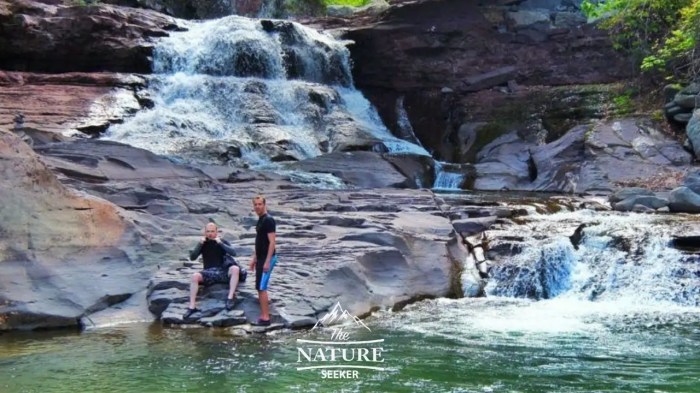
Source: thenatureseeker.com
User reviews and ratings are crucial for building a robust and trustworthy recommendation system for hikes. They provide valuable insights into the experience, enabling users to make informed decisions. Accurate, diverse, and well-organized reviews offer a more comprehensive perspective than any objective metric, providing a glimpse into the nuances of the hiking experience.Collecting and analyzing this feedback enhances the system’s ability to predict user satisfaction and refine recommendations.
A well-structured approach to gathering and evaluating user input is essential for generating reliable and helpful recommendations. This is especially critical in the context of highly subjective experiences like hiking, where personal preferences and environmental factors significantly influence the perceived enjoyment.
Importance of User Feedback
User feedback provides a direct measure of user satisfaction and experience. Qualitative insights from reviews, like descriptions of scenery or trail difficulty, complement quantitative data like ratings, enabling a more nuanced understanding of each hike. Reviews offer crucial details, such as the difficulty level, the beauty of the scenery, and the overall enjoyment of the experience.
Collecting and Organizing User Reviews and Ratings
A dedicated platform or section for reviews, easily accessible alongside hike details, is essential. The platform should encourage users to submit reviews following a structured format. This format should encompass a rating scale (e.g., 1-5 stars), a text box for detailed comments, and fields for specifying the date of the hike and the reviewer’s experience level. A standardized format simplifies organization and analysis.
- Data should be categorized by hike, enabling quick retrieval and analysis for each trail.
- A system for tagging reviews with relevant s (e.g., “easy,” “scenic,” “challenging”) will enhance searchability and aggregation of similar experiences.
- Regularly updating the review database ensures relevance and minimizes outdated information.
Review and Rating Display Format
A clear and concise format for displaying reviews and ratings is crucial for easy comprehension. A visually appealing table format, or a summary card approach, should highlight essential information at a glance.
| Review | Rating | Reviewer |
|---|---|---|
| “Beautiful views, moderate difficulty, worth the effort.” | 4 | Experienced Hiker |
| “Challenging climb, but breathtaking vistas. Highly recommend.” | 5 | Beginner |
| “Trail was well-maintained, but very crowded.” | 3 | Family with young children |
Analyzing User Feedback
Analyzing user feedback is crucial for refining the recommendations. This involves identifying trends and patterns in the reviews. For instance, if several reviews mention a particular trail being too crowded, the platform can highlight this in the trail description, potentially suggesting alternative trails.
- Sentiment analysis of the text reviews can help gauge the overall positivity or negativity associated with a hike.
- Quantitative analysis of the ratings allows for identification of the most popular and highly rated hikes.
- Tracking changes in ratings over time can highlight seasonal trends or identify potential issues on particular trails.
Metrics for Rating and Ranking Hikes
Various metrics can be used to rank and rate hikes, each offering a different perspective. A weighted average of ratings, incorporating the number of reviews, provides a robust measure of overall satisfaction. This is particularly helpful in situations where a few very enthusiastic reviews might skew the average.
- The frequency of specific s in reviews (e.g., “easy,” “challenging,” “scenic”) can be incorporated into a score to reflect user perceptions of different hike attributes.
- A composite score considering factors like difficulty, scenery, and user ratings can generate a comprehensive metric for ranking hikes.
Practical Considerations
Planning a hike involves more than just choosing a trail. Successful outings depend on careful consideration of various factors, from weather patterns to equipment needs. This section provides a practical framework for optimizing your hiking experience.Understanding the interplay between environmental conditions and your personal preparedness is crucial for a safe and enjoyable hike. Factors like temperature, precipitation, and trail conditions all significantly impact the experience and safety of a hike.
Planning ahead and considering these factors can mean the difference between a memorable adventure and a frustrating or even dangerous experience.
Weather Conditions and Forecasts
Accurately predicting weather conditions is essential for successful hiking. Weather forecasts provide valuable insights into potential challenges and risks. Integrating weather data into your search process allows you to filter results based on desired conditions, ensuring a more comfortable and safe experience. This integration should include the ability to specify parameters like temperature ranges, precipitation probability, and wind speeds.
For example, you can filter for hikes with a low chance of rain or temperatures within a specific range, depending on your preferences and tolerance.
Seasonality and Equipment
Hiking seasonality strongly influences trail conditions and appropriate gear. Different seasons present distinct challenges and opportunities. Spring and fall often offer pleasant temperatures and vibrant landscapes, but be prepared for potential sudden weather changes. Summer months can bring scorching heat and increased risk of dehydration. Winter hikes necessitate specialized gear and knowledge of snow conditions and ice hazards.
Equipment requirements also vary greatly depending on the season and the specific trail. For instance, layers of clothing are essential in variable weather, and sturdy waterproof boots are critical in wet conditions.
Trail Conditions and Information
Real-time information about trail conditions is critical for safe and enjoyable hikes. Information on trail closures, recent damage, or hazardous conditions allows hikers to make informed decisions. Providing options for reporting and updating trail conditions is essential for maintaining a comprehensive and accurate database. This information should be readily available, updated regularly, and easily accessible. This might include recent reports from other hikers or trail maintenance teams.
This information can be crucial in preventing accidents or discomfort on the trail.
Importance of Weather Factors for Hiking
| Weather Factor | Importance | Explanation |
|---|---|---|
| Temperature | High | Extreme temperatures, either high or low, can significantly impact comfort and safety. Heatstroke and hypothermia are real risks. |
| Precipitation | Medium-High | Rain, snow, or other forms of precipitation can make trails slippery, create hazards, and reduce visibility. Proper gear is critical. |
| Wind | Medium | Strong winds can affect comfort and create challenges for navigation, especially on exposed trails. Wind chill can drastically reduce temperatures. |
| Sun Exposure | High | Extended sun exposure can lead to sunburn and heat exhaustion. Appropriate sunscreen and hydration are essential. |
Outcome Summary: Best Hikes Near Me
In conclusion, finding the best hikes near you is a rewarding experience that caters to various preferences and skill levels. By considering distance, hike type, attributes, visual appeal, user feedback, and practical considerations, you can confidently select the ideal outdoor adventure. This guide serves as your compass, empowering you to embark on unforgettable hiking journeys. Remember to check trail conditions and weather forecasts before heading out!
Popular Questions
What if I’m not sure how far “near me” should be?
We recommend starting with a 10-mile radius and gradually increasing the search range if you don’t find suitable hikes. Consider your transportation options and the time commitment you’re willing to make.
What types of hikes are available?
Hikes vary significantly in difficulty, from easy strolls to challenging climbs. Look for descriptions highlighting trail length, elevation gain, and difficulty ratings. Consider your fitness level and experience before selecting a hike.
How important is the weather forecast for hiking?
Weather conditions significantly impact the safety and enjoyment of a hike. Always check the forecast before setting out and be prepared for changing conditions. Be sure to account for potential changes in temperature and precipitation.
What if I want to see wildlife on my hike?
Many hiking trails offer opportunities to spot wildlife. Consider the time of year and the specific animals known to inhabit the area. Look for trails with detailed descriptions mentioning wildlife sightings. Be respectful of wildlife and maintain a safe distance.

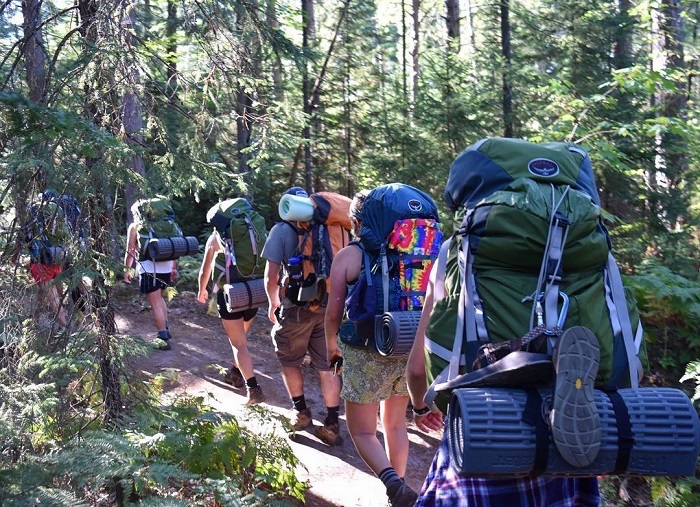

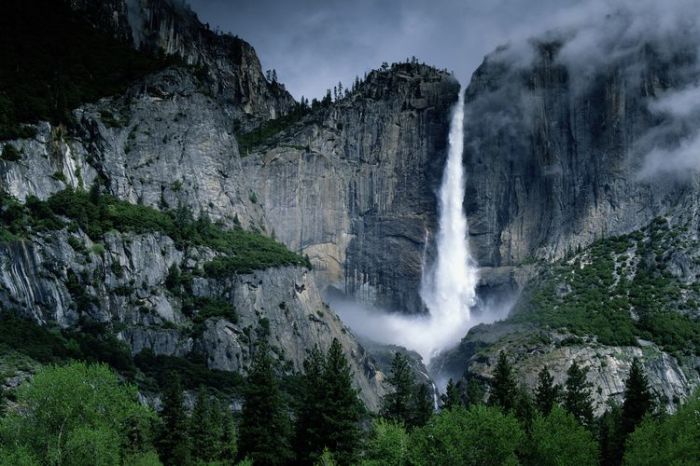

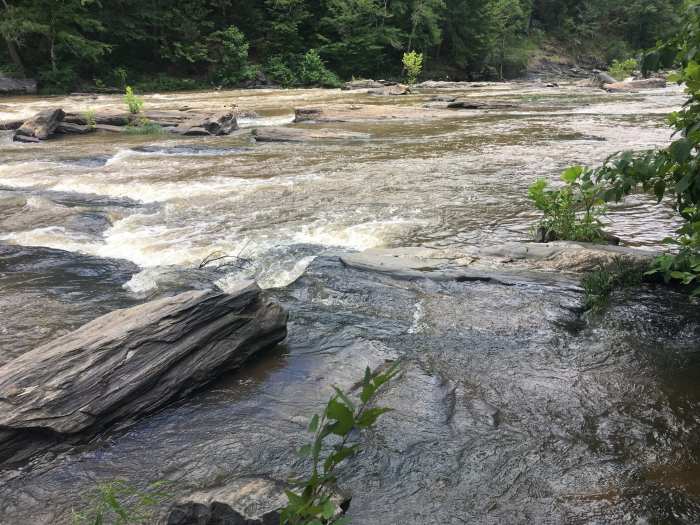
Leave a Reply